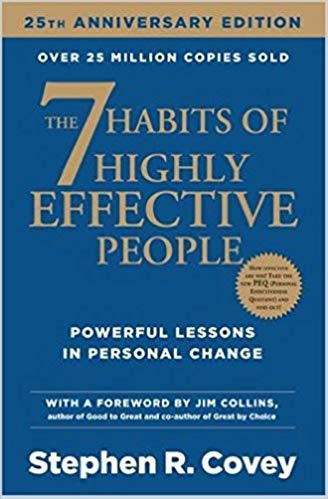

This article is an excerpt from the Shortform summary of "The 7 Habits of Highly Effective People" by Stephen Covey. Shortform has the world's best summaries of books you should be reading.
Like this article? Sign up for a free trial here .
The 7 Habits are meant to create maximum effectiveness in your life by focusing on core principles to produce the best long-term results. The P/PC Balance is one of those core principles.
P/PC Balance is a way to use your time as effectively as possible. “P” stands for “production” and “PC” stands for “production capability,” and if you want to keep producing, or getting results, you have to keep investing in your production capability, the thing that gets you those results.
Part of this balance is the ability to get results, and manage your output. You don’t want to be spending lots of time on something for minimal results. The P/PC balance can help you achieve this balance to be the most effective.
What is the P/PC Balance?
There is an important difference between efficiency and effectiveness: Efficiency is getting the most done in the least amount of time, while effectiveness is targeting your efforts to get the most important things done.
The key to effectiveness is balancing short-term results with long-term results — investing too much in one reduces the other.
In other words, effectiveness relies on the P/PC Balance.
- P is the production of the results you want.
- PC is the production capability, or the thing that produces the results.
Think of the P/PC Balance in terms of Aesop’s story of the goose that laid golden eggs: A farmer discovered one day that his goose had laid a solid golden egg. He was thrilled — and surprised when, the following day, the goose laid another golden egg. This continued day after day. Over time the farmer got greedy and impatient, and one day he killed the goose, thinking he would open up the body and collect all the golden eggs at once. But when he looked inside the dead goose, it was empty. There were no golden eggs (P), and now no goose left to produce them (PC).
The farmer valued the golden eggs over the goose — or the P over the PC — and the imbalance ultimately left him without either.
You must continually invest in maintaining the PC if you want to keep reaping the P. When you get impatient and push for short-term results (more P), you risk wearing out the mechanism that’s creating the results (PC). Consider the examples below. Do they achieve a P/PC Balance?
- Example 1: A company buys a new piece of machinery and runs it at full capacity, not even stopping for rest or maintenance. The production creates lots of profit but, after some time, starts to wear out and break down. Now the company has to invest in fixing the machine, adding up to even more lost time and money than if they had kept up on incremental maintenance; buying a new machine to replace it may save some time, but is an expensive option. Costs rise and profits fall.
- Example 2: You use too much money to buy a big house and nice car, leaving little money left over for making the car and mortgage payments to maintain that high standard of living in the long term. You eventually fall short, ending up worse than you started — out of a house and a car, and with little money for your basic needs.
There are three kinds of assets that have the capability (PC) to produce things (P): physical, financial, and human. Examples 1 and 2 above show how the P/PC Balance applies to physical and financial assets, but what is a human asset?
Human assets are the relationships we have with other people. It’s even more critical to maintain the P/PC Balance in relationships not only because relationships are important to your life and effectiveness, but also because people often control your access to physical and financial assets.
You can think of marriage as one example of the P/PC Balance. Marriage brings benefits to both people involved, including mental and emotional support as well as legal and financial benefits — double income, joint taxes, shared healthcare benefits, and shared rent/mortgage and other household costs. But if both partners neglect maintaining the health of their relationship, they risk the marriage falling apart and the loss of all those benefits that come with it.
Human assets must also be a priority for organizations: Think of how important customers and employees are to a business.
Successful companies spend a tremendous amount of effort and energy building trust and loyalty with their customers. If a company — whether manufacturing, retail, or food — compromises the quality of its product to make more profits (P), it jeopardizes its customers’ loyalty and continued business (PC). Both are needed to maintain a P/PC Balance.
The best companies also invest in their employees by offering good pay and benefits, creating a nurturing company culture, providing ample training, and via other methods. The executives at these companies understand that employees hold the PC to make sales, provide high-level customer service, make quality products, and perform other tasks necessary to create profits (P). When done correctly, the most effective companies can also achieve a P/PC Balance.
Utilizing P/PC Balance methods makes it easier to succeed in business and life. It’ a method that allows you to maximum efficiency without sacrificing your well-being or other aspects of your life.
———End of Preview———

Like what you just read? Read the rest of the world's best summary of "The 7 Habits of Highly Effective People" at Shortform . Learn the book's critical concepts in 20 minutes or less .
Here's what you'll find in our full The 7 Habits of Highly Effective People summary :
- How to prioritize the hundred tasks you have to focus on the one or two that really matter
- The right way to resolve every disagreement and argument
- How to avoid burning out and succeed over 20+ years






